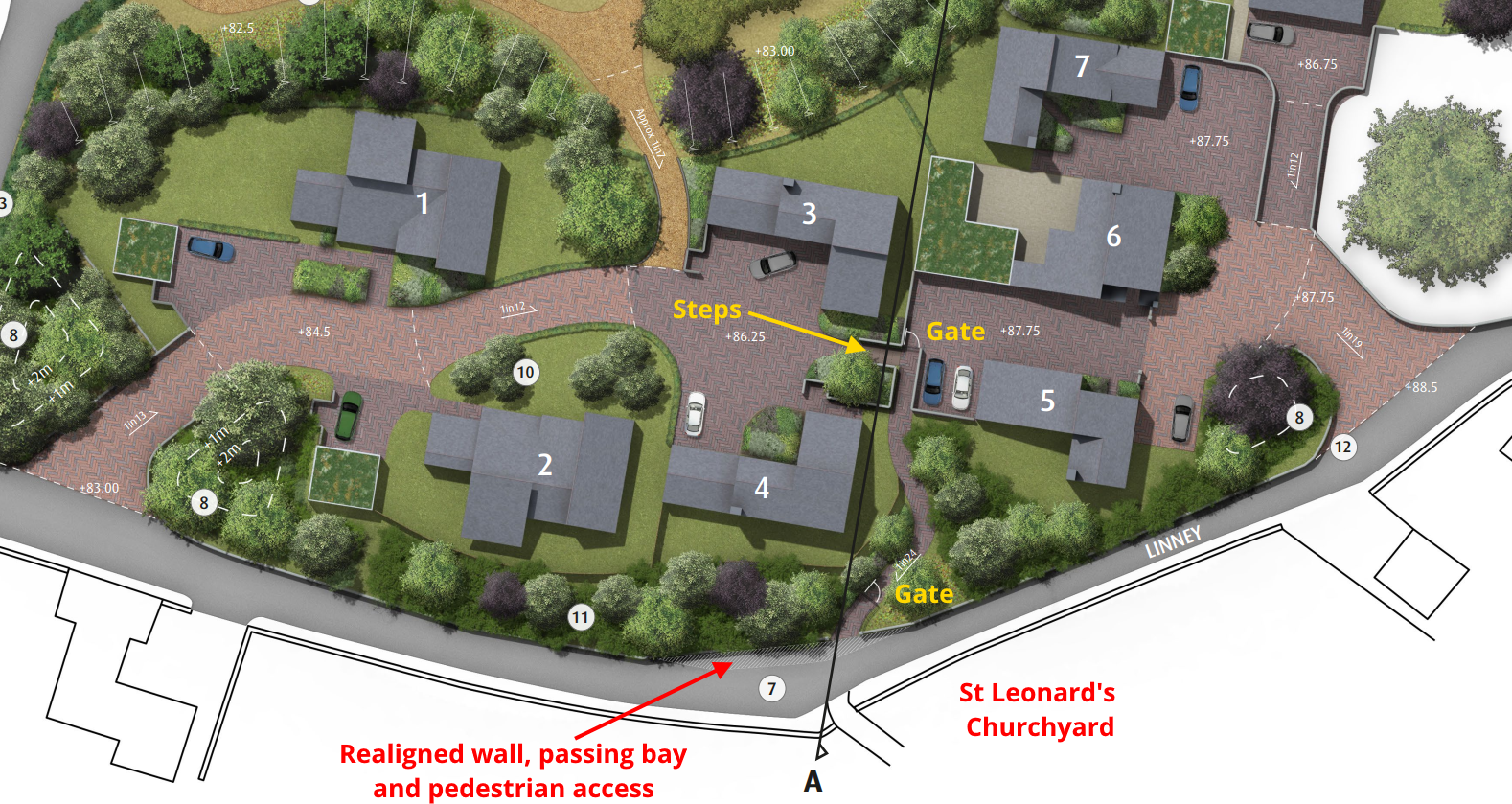On Thursday, a government planning inspector rejected a scheme for eight homes in the grounds of Linney House. The decision is a vindication for Shropshire Council’s planners and its tree team. They have been under a lot of pressure from the developer throughout but have stood their ground. For a scheme of at most eight homes, they have had to put in as much effort as might be expected for a supermarket application.
The inspector’s reasoning also strengthens our hope that the Castle View Terrace housing scheme will also be rejected at appeal. The inspector was clear that we have enough housing being built in Ludlow and don’t need more, especially housing that flies in the face of the local plan.
This planning saga began in May 2012 with an application for four homes in the grounds of Linney House. A reduced scheme of three large suburban homes (12/02275/FUL) was approved by officers in May 2014 at a time when the council had to approve almost anything to catch up with government targets for housebuilding. The developer was never very interested in this scheme and in 2019, a new application was made for eight houses of modern design (19/00826/FUL). This met strong objections from Shropshire Council’s tree and conservation teams. Before it could be decided, the developer appealed to the planning inspectorate based on the application having not being determined withing government deadlines. The Southern Planning Committee later decided it would have rejected the scheme if it had had a chance to do so. It approved a scheme for four homes of modern design in October last year. However, the developer did not withdraw his appeal and the decision arrived yesterday, nine months after the appeal began.
In his report, Inspector Gareth Thomas recognised “the general appearance of a block of woodland that seamlessly blends into and contributes towards the distinctly rural character and wider countryside to the north.” He added:
“The site has a distinctly woodland character with a substantial number of mature and semi-mature trees, some of which have self-seeded along the terraces of the former quarry area and adjoining the riverbank. Whilst some tree clearance has taken place in recent years, the site maintains a distinct woodland block both from The Linney and from higher ground within the town, including from the castle ramparts and from Coronation Avenue and the countryside to the north.”
Referring to the approval of three large homes, the inspector said:
“A scheme for eight houses cannot reasonably be comparable with the consented scheme given the land-take and tree clearance that would be involved. The urbanisation effects of eight houses at this location by comparison to three houses would be considerable and in the context of this location, harmful.”
Accepting that the eight home scheme was well designed, which is also the view of the council and myself, the inspector said that good design could not override local development plan policies which are currently meeting the needs of Ludlow for housing.
Returning to the tree loss should the scheme go ahead, Mr Thomas said:
“The proposal would lead to the erosion and fragmentation of what is presently a highly natural and, in addition, potentially ecologically rich habitat in local terms, particularly given its riverside location… This level of impact in this case would be unacceptable due to the loss of the woodland, which is a significant local landscape feature… There would be significant encroachment into the riverside views towards the castle and the town from open fields within the conservation area to the north and the west… When viewed along a lengthy section of The Linney [the scheme] would have an unacceptable urbanising effect to the detriment of the character and appearance of this part of the conservation area.”
I have written about this site and this application many times. I haven’t changed my view that it should not be developed and should become a green area for the benefit of the community on the banks of the Corve. However, the four home scheme is significantly less damaging than the eight home scheme would have been.
The inspector’s decision was the right one.
The developer had applied for costs against Shropshire Council. Costs are awarded where a council has not followed procedures or has caused unnecessary delays. They can be awarded even if the appeal is allowed if the inspector judges the council has acted unreasonably. The developer claimed that he had worked with the council from the outset but went to appeal rather than continue negotiations with the developer. The planning inspector concluded the council had not acted unreasonably:
“Given what I have read and as evidenced in the various communications, consultation responses and explanations given by the Council, I do not consider that this amounted to unreasonable behaviour on the part of the Council.”
The costs claim against the council was refused.



Some good news amid all the developer destruction. We must hope relentless appeals are not given in to by Planning due to ‘costs’.
You can’t put a price in saving our environment
Agreed. I thnk Shropshire Council learnt a lesson from the Foldgate Lane debacle. The appeal decision should have gone for judicial review but the then chief excutive refused to give permission for the challenge because he was worried about the cost. Since then, Shropshire planners have fought much harder at appeals and win most of them.